DUBAI: Arguably the largest annual global gathering for interior and furniture designers, Milan Design Week, staged this year from April 7-13, saw several designers and firms from the Arab world present at the prestigious event.
One exhibition there, Gucci’s “Bamboo Encounters,” curated and designed by 2050+ and its founder Ippolito Pestellini Laparelli, explores the role of bamboo in the brand’s history, featuring specially commissioned pieces by contemporary designers from around the world.
In post-World War II Italy, raw materials were difficult to source and so the fashion house’s founder Guccio Gucci opted for the lightweight and resilient bamboo as an alternative handle for bags. Florentine artisans creating Gucci bags supported a design that incorporated bamboo. The result was the iconic Gucci Bamboo 1947 bag.
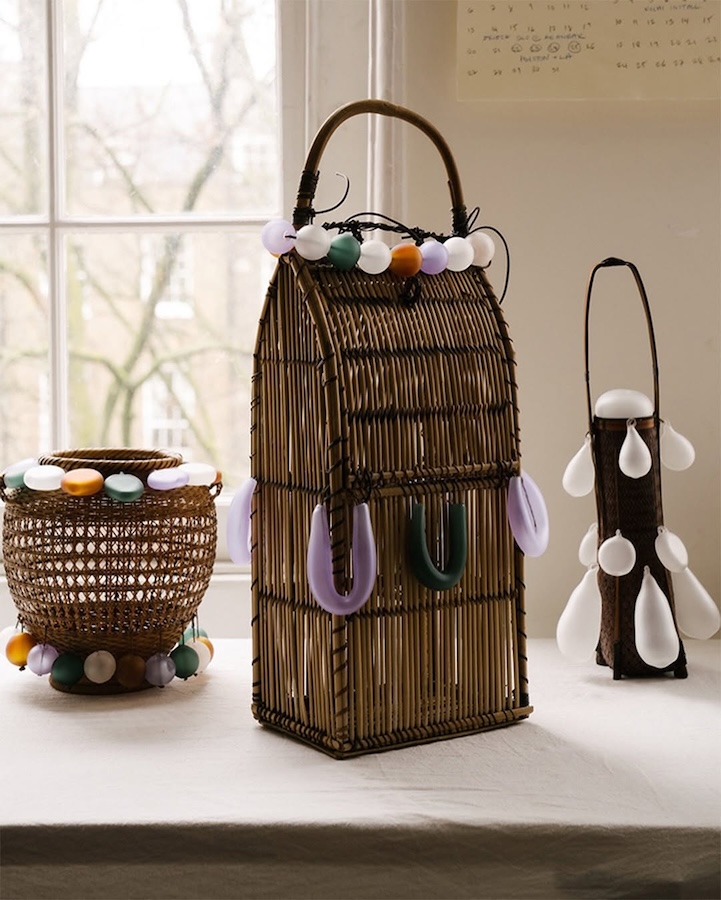
Views of Dima Srouji's "Hybrid Exhalations" for Gucci's Bamboo Encounters presentation during Milan Design Week 2025. (Courtesy of Gucci)
Among the various commissioned designers in “Bamboo Encounters” is Dima Srouji, a Palestinian architect and artist. Her bamboo-style baskets, “Hybrid Exhalations,” showcase basketry traditions of the Levant, incorporating hand-foraged bamboo with delicate blown glass by the Twam family in Palestine. The pieces evoke a sense of fragile beauty and resilience.
During her three months of research, Srouji fell in love with the history of basket-making.
“I really like this idea of time passing and the amount of time that it requires to weave baskets really slowly by these anonymous artisans from all over the world,” she told Arab News.
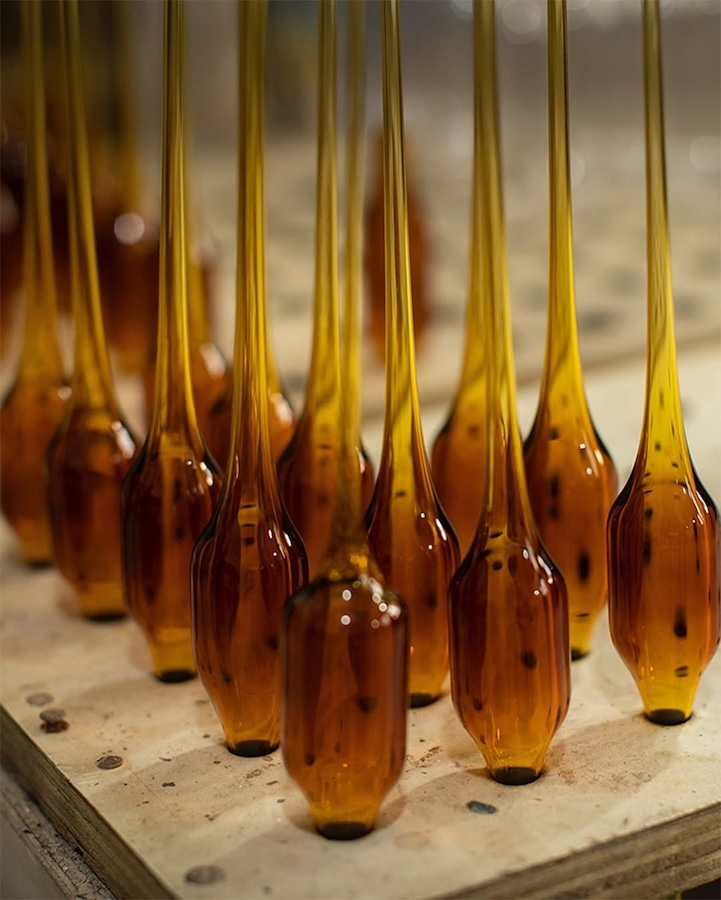
Views of Dima Srouji's "Hybrid Exhalations" for Gucci's Bamboo Encounters presentation during Milan Design Week 2025. (Courtesy of Gucci)
“Some of these baskets were found online, like on eBay. Some of them were from different auctions, and each one is from a different country. Some are even flower baskets from Japan; fish baskets and egg baskets from Philippines, one is a World War II hat from the UK from an English gentleman that got it from Vietnam in the 1940s.”
Srouji transformed them into playful, organic forms by combining them with blown-glass pieces that she made with Palestinian glassblowers; the Twam family that she has been working with for the past 10 years. They are based in Jaba’, a historic village located northeast of Jerusalem between Ramallah and Jerusalem.
“The combination of the glass and the baskets happened in my studio where I started weaving the glass into the already woven baskets and they became their own living creatures,” Srouji said. “They’re airy, playful, and each (piece) has embedded memories in them. Each one tells a different story from a different part of the world, and it’s an important moment to think about joy and celebrate the history of Palestinian tradition, and especially during such a dark time.”
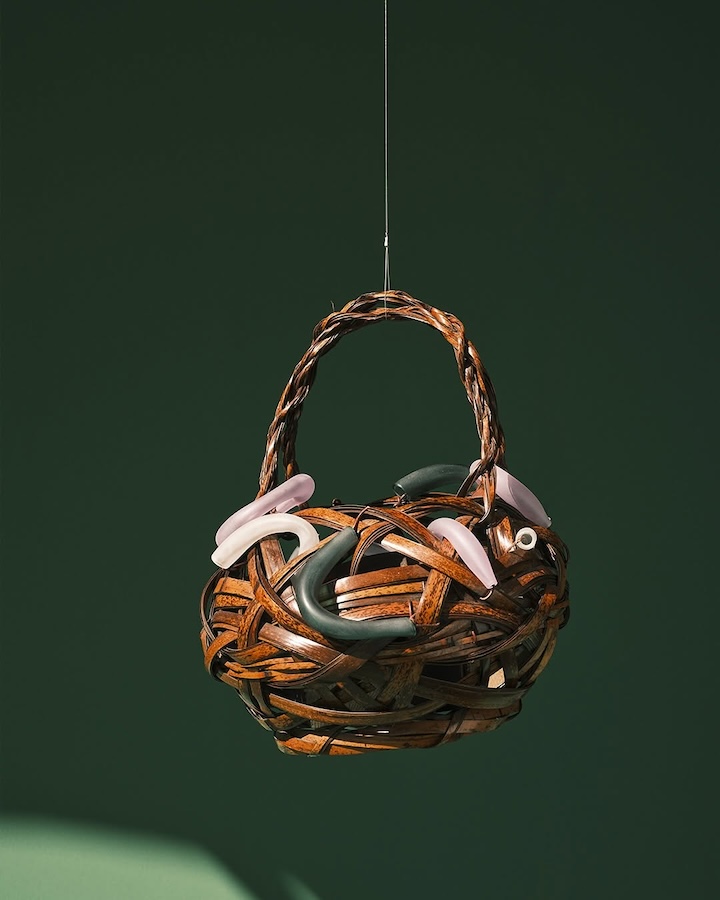
Views of Dima Srouji's "Hybrid Exhalations" for Gucci's Bamboo Encounters presentation during Milan Design Week 2025. (Courtesy of Gucci)
At Isola Design Festival by Isola Design Group, which has offices in Dubai Design District (d3), several emerging designers from the Arab world presented their work. One is Palestinian designer Victoria Dabdoub who presented her first collection, “Stone Objects: A Study of Core Solids,” made of several hand-shaped stone masses connected by a brass piece. The result is elegant and playful candle-holders that invite the user to make their own display using several pieces.
“My work looks at local practices in Jordan and Palestine and aims to work with local artisans to develop contemporary pieces,” Dabdoub said. “My first collection is a collection of stone candle-holders that I made during two workshops in Amman, one involving metalwork and the other stonework.”
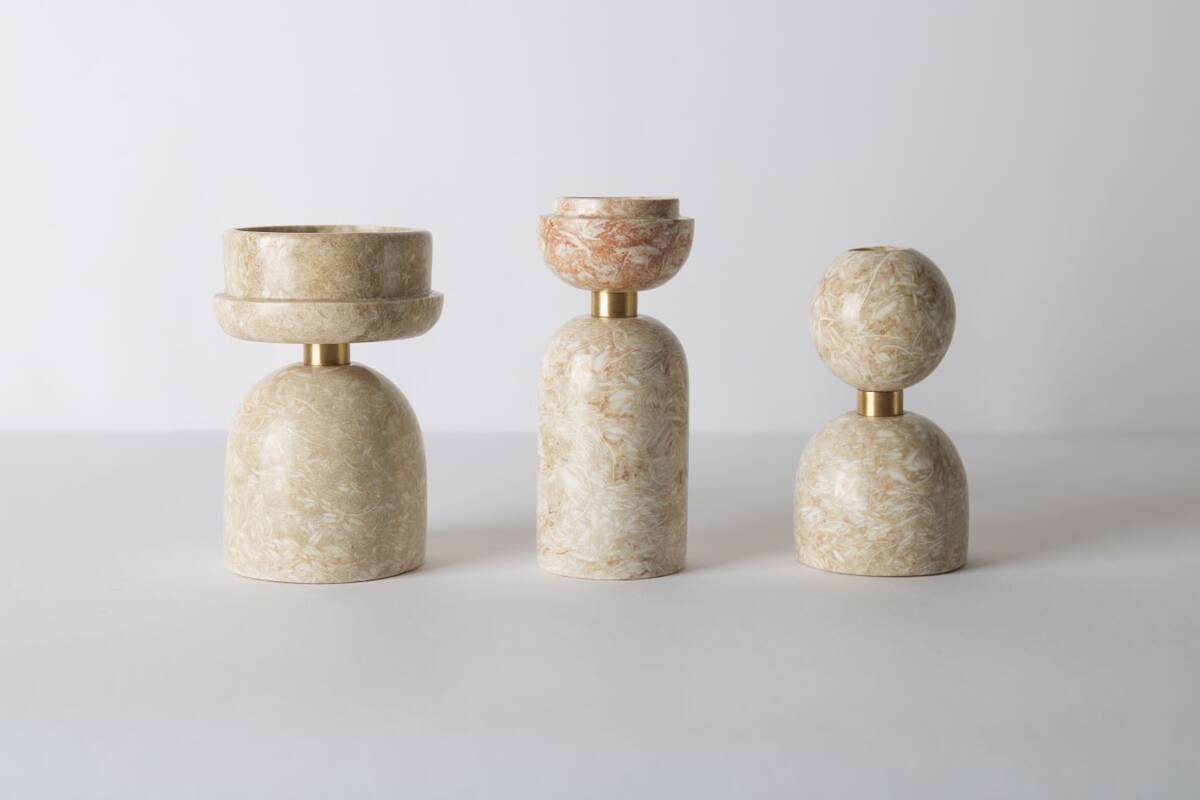
Candleholders by Victoria Dabdoub presented at the Isola Design Festival in Milan. (Photography by Hussam Hasan)
She added: “I think it is important to produce high-quality products locally. The stone is limestone from the south of Jordan and the brass is sourced in the market, likely from Italy or elsewhere. Whether I am working from Jordan or Palestine, it is important to try and incorporate local practices, especially given the war taking place and the number of voices that are unheard. Trying to say something through design, crafts and material and heritage is crucial.”
Etereo, the creative studio based between Dubai and Milan, returns to Milan Design Week with an immersive exhibition at Nilufar Depot, featuring its popular “Faraglioni” and “Grottesche” collections. The alluring forms, materials and colors of these pieces celebrate the synergies between design and nature, especially those found in the Mediterranean.
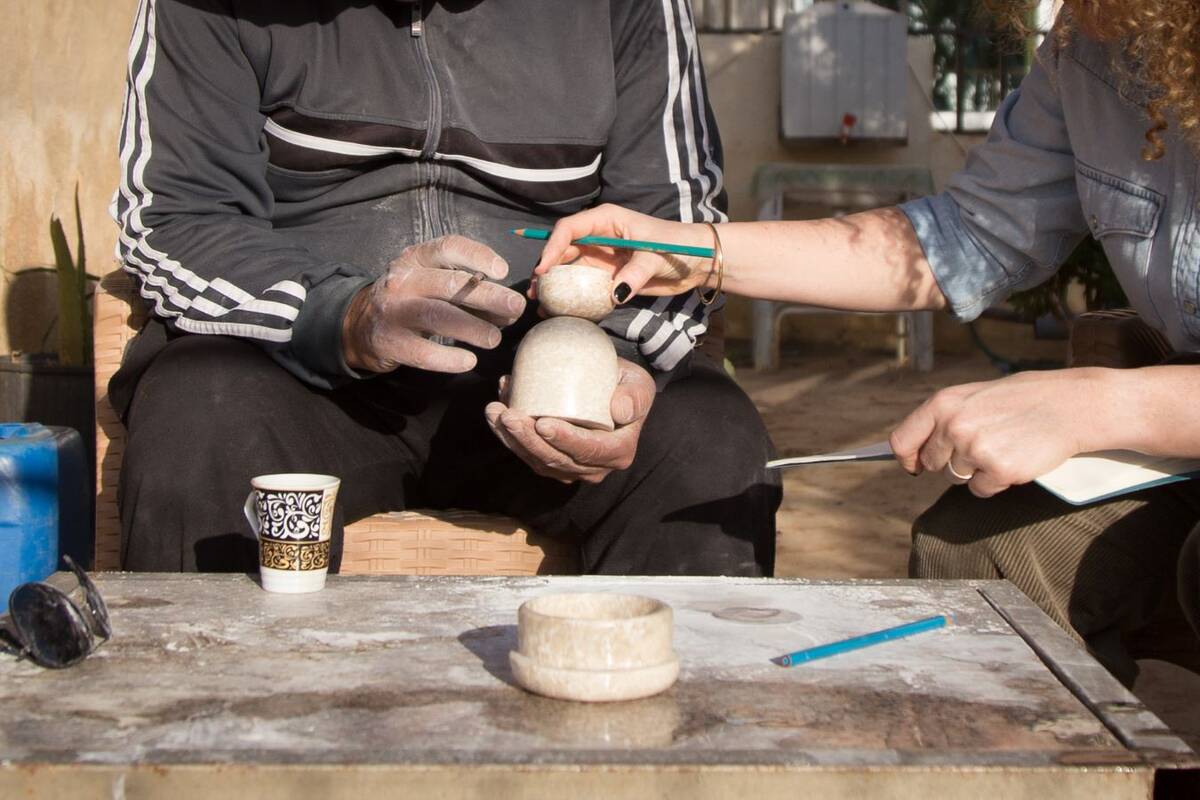
The making of Victoria Dabdoub's candleholders presented at the Isola Design Festival in Milan. (Photography by Hussam Hasan)
The “Faraglioni” collection, produced exclusively for Nilufar in a limited edition, showcases the essence of the sea within interior spaces through sculptural designs — a centerpiece table, dining table, coffee table, and two consoles that pay homage to the famous Faraglioni rocks of Capri that represent timeless natural wonders and heritage.





















